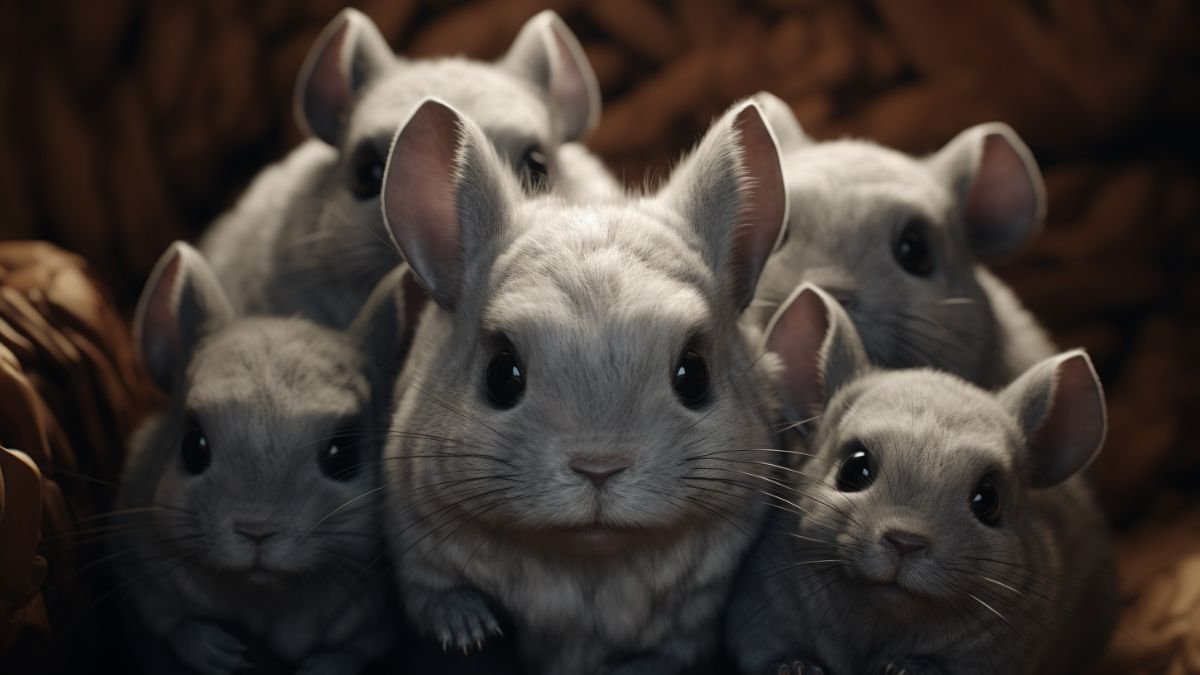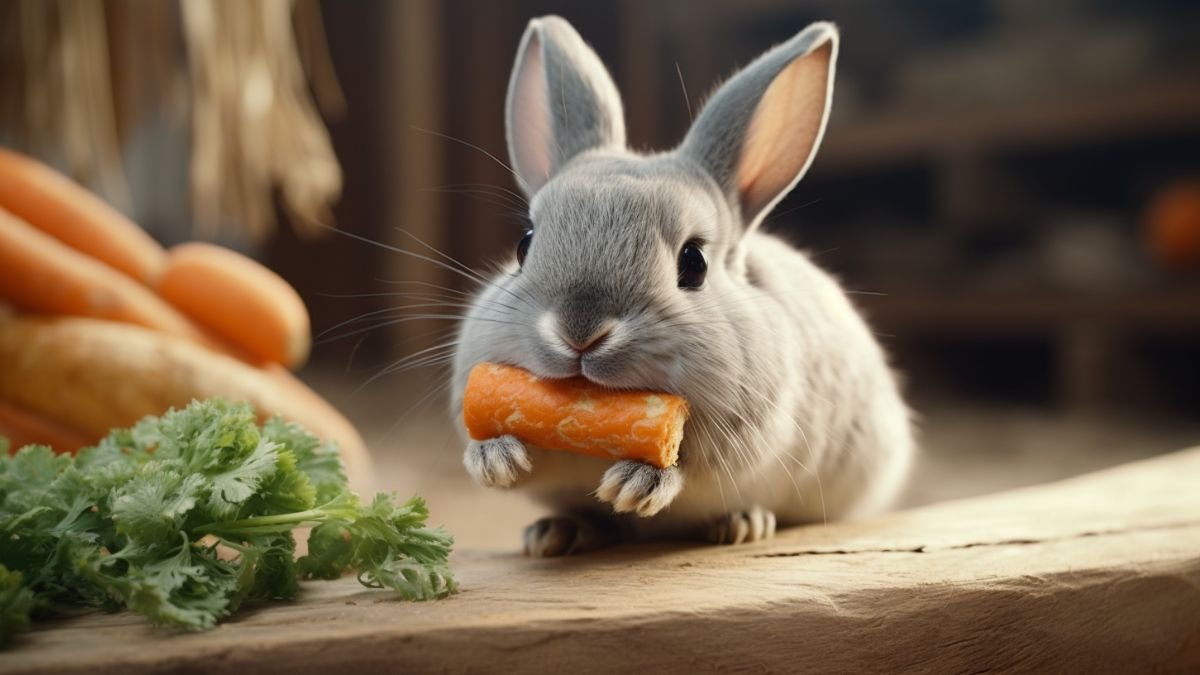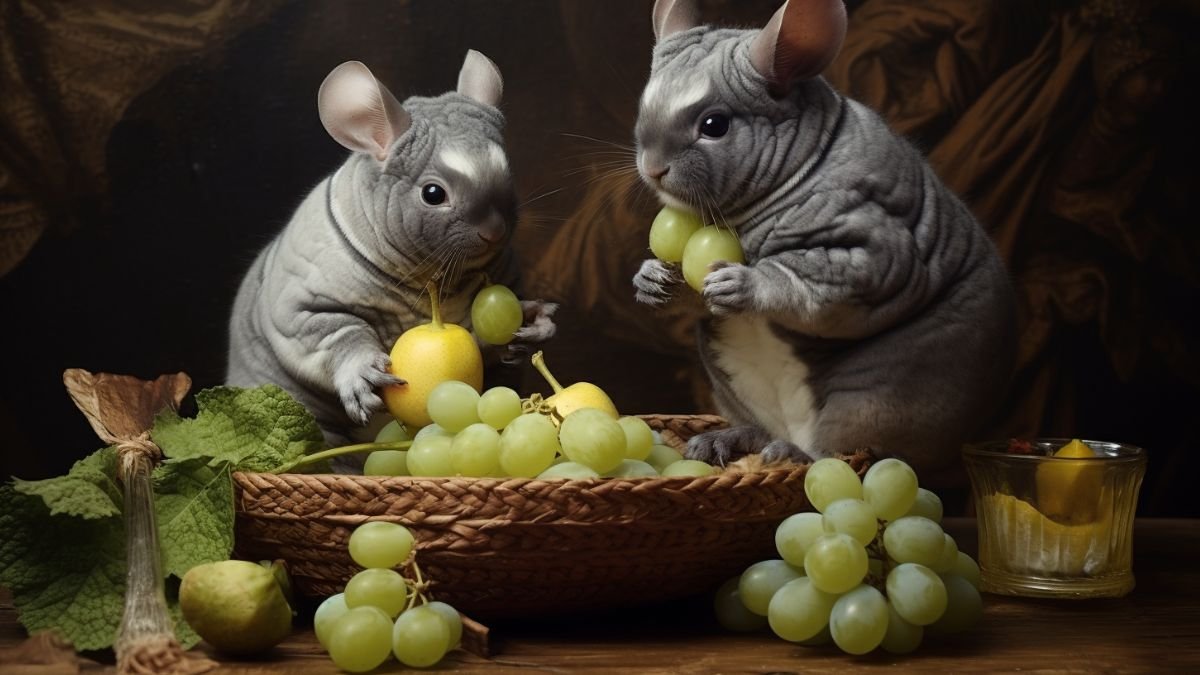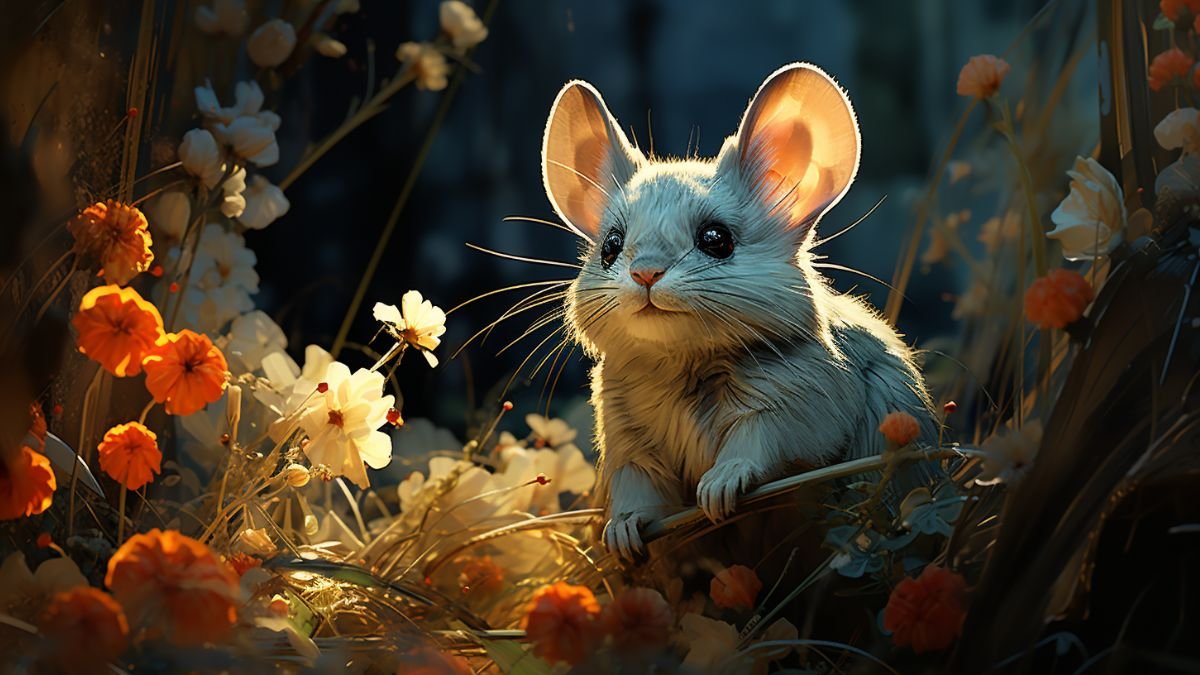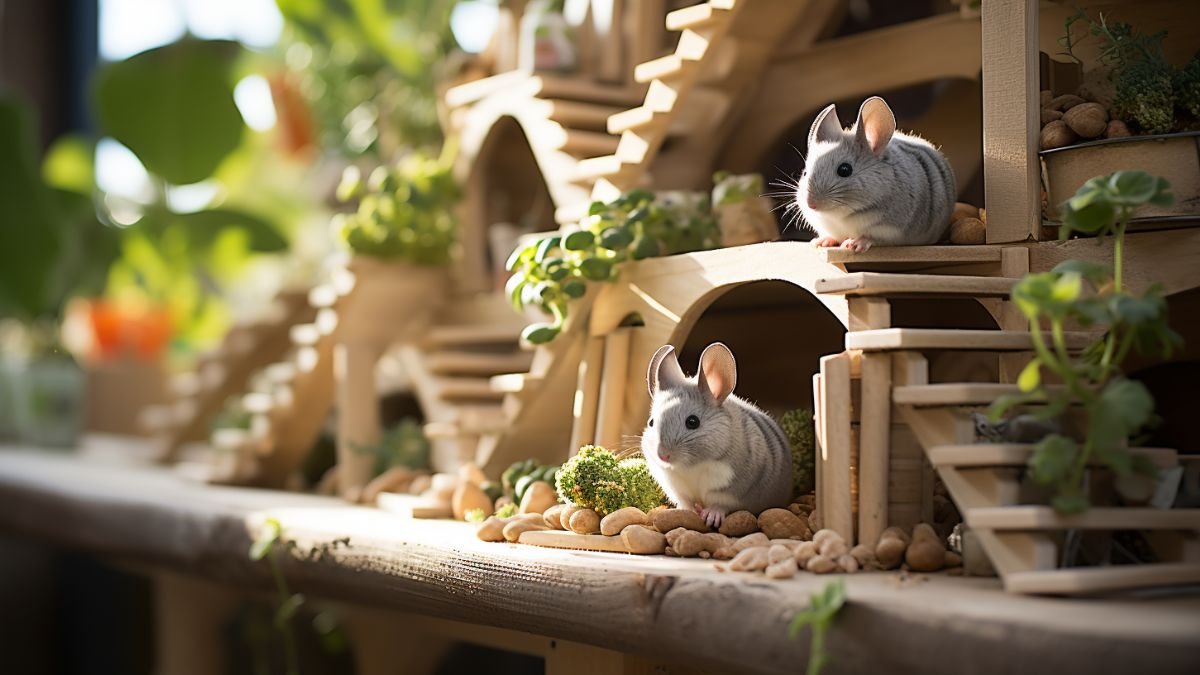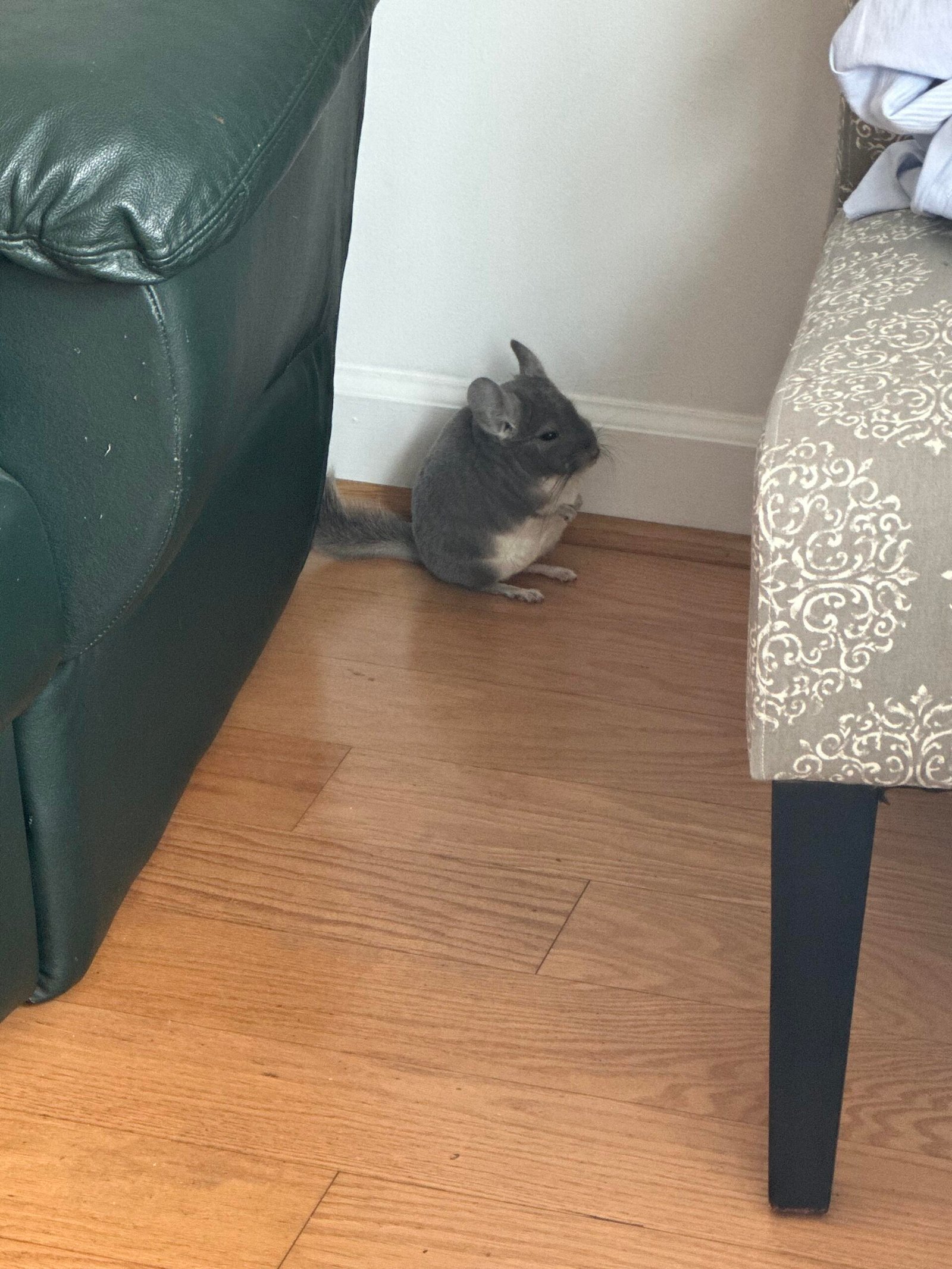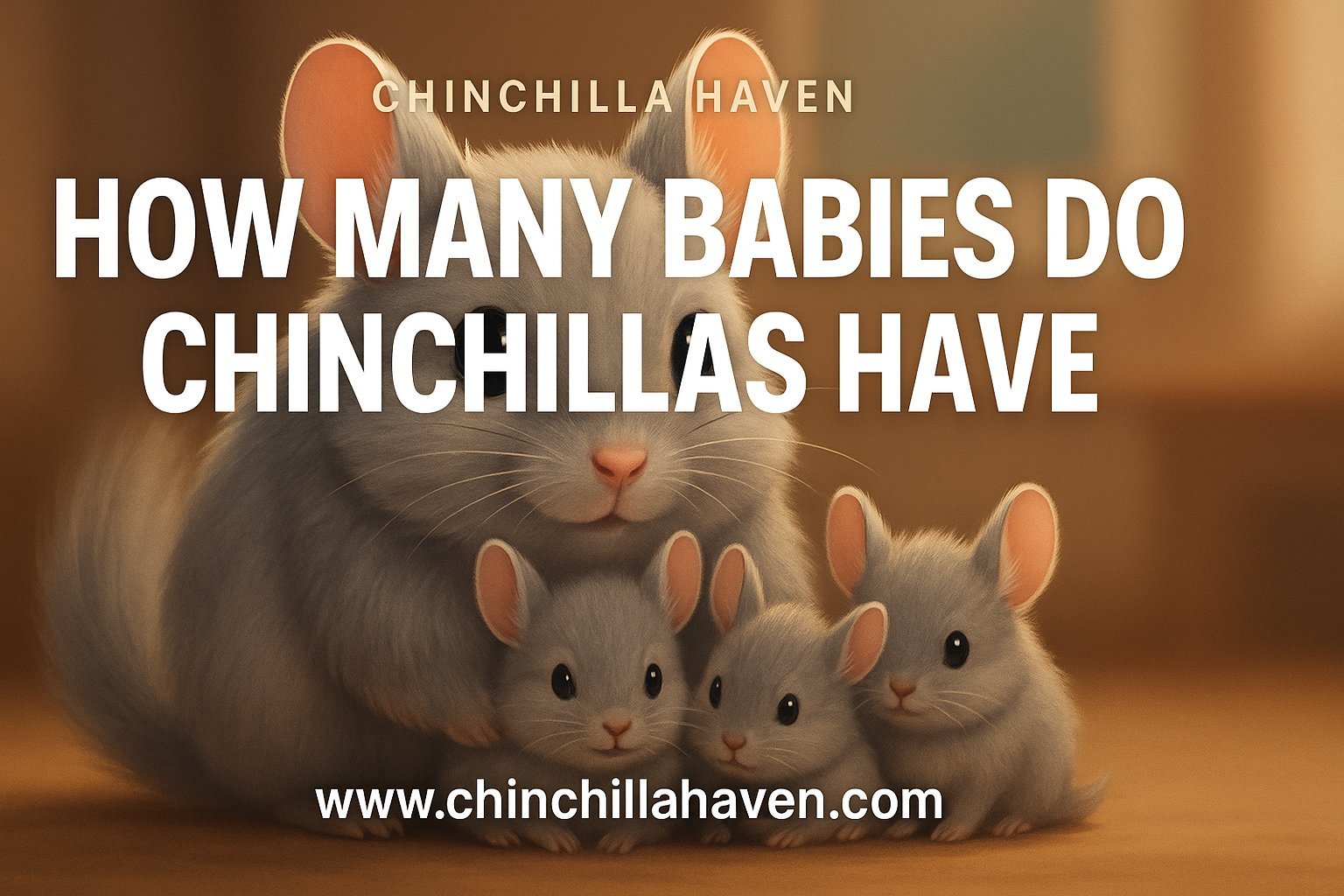
Introduction
Chinchillas are fascinating, social rodents known for their soft fur and unique behaviors. If you’re curious about chinchilla breeding or planning to raise them, one of the most common questions is: how many babies do chinchillas have?
The short answer: chinchillas usually have 1–3 babies per litter, though litters of up to 4–6 kits are possible. Breeding chinchillas, however, requires knowledge, preparation, and responsibility, as it can affect both the mother’s health and the wellbeing of the babies.
In this guide, we’ll explore:
- Average litter sizes and breeding cycles.
- Gestation and birth process.
- Care for mother and babies.
- Risks, responsibilities, and ethical considerations.
- Essential products for safe breeding environments.
Average Litter Size of Chinchillas
On average, chinchillas give birth to 1–3 babies per litter, called “kits.”
- Most common: 2 kits.
- Rare but possible: 4–6 kits, though survival rates drop.
👉 Unlike many rodents, chinchillas are not prolific breeders like mice or hamsters. Their reproductive cycles are slower, and they have fewer litters each year.
Chinchilla Breeding Cycle
- Breeding season: Typically November through May in the Northern Hemisphere.
- Gestation period: About 111 days — one of the longest for rodents.
- Number of litters per year: 1–2 (responsible breeders avoid overbreeding).
The long gestation explains why chinchillas produce fewer offspring compared to other rodents.
Birth and Development of Kits
At Birth:
- Kits are born fully furred, with eyes open.
- They can move around within an hour.
- Average birth weight: 35–50 grams.
First Weeks:
- Kits begin nibbling hay and pellets within a few days.
- Nursing lasts 6–8 weeks.
- By 8 weeks, they are typically weaned and can live independently.
👉 For food guidance, see optimal chinchilla diet and healthy chinchilla treats.
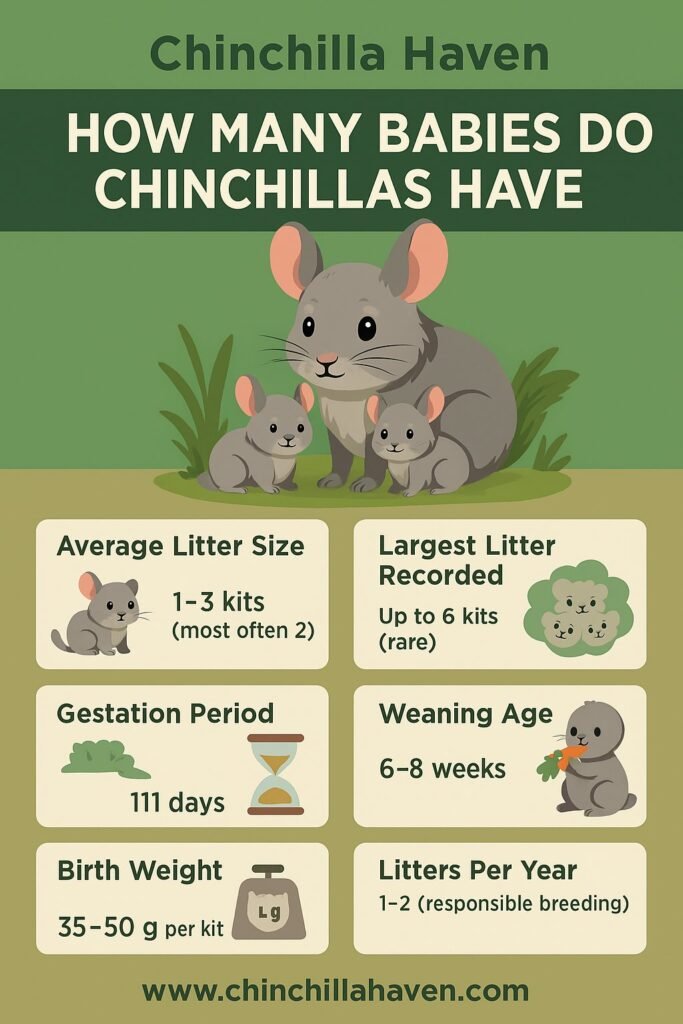
Factors Influencing Litter Size
- Genetics – Some chinchilla lines naturally have larger or smaller litters.
- Mother’s Age – Younger or older females may produce smaller litters.
- Health & Nutrition – Proper pellets, hay, and nutrients improve outcomes.
- Environment – Stress, temperature (see do chinchillas need air conditioning), and cage conditions affect litter health.
Risks of Breeding Chinchillas
- Complicated pregnancies due to long gestation.
- Small size of mothers makes large litters risky.
- Postpartum stress if conditions are not optimal.
- Responsibility for care and rehoming — chinchillas live 10–20 years (see how long chinchillas live).
👉 Expert opinion: Only experienced breeders or those working with rescues should attempt breeding.
📊 Chinchilla Breeding Quick Facts
- 🐭 Average Litter Size: 1–3 kits (most often 2)
- 🍼 Largest Litter Recorded: Up to 6 kits (rare)
- ⏳ Gestation Period: ~111 days
- 🥬 Weaning Age: 6–8 weeks
- ⚖️ Birth Weight: 35–50 grams per kit
- 🏡 Litters Per Year: 1–2 (responsible breeding)
Cage Setup for Breeding Chinchillas
For safe births and baby care:
- Use a large, sturdy chinchilla cage.
- Provide multiple shelves for exercise.
- Add soft hideout houses for nesting.
- Ensure fresh water with chinchilla water bottles.
- Maintain cool temps with chinchilla cooling stones.
🛒 Product Comparison Table: Chinchilla Breeding Essentials
| Product | Key Features | Best For |
|---|---|---|
| MidWest Deluxe Critter Nation Cage | Spacious, secure, easy to clean; perfect for mother and kits. | Breeding setup, long-term housing. |
| Kaytee Small Animal Hideout | Cozy, washable hideout for nesting and reducing stress. | Safe birthing area. |
| Lixit Glass Water Bottle | Chew-proof, hygienic water source for nursing mothers. | Daily hydration needs. |
| Marble Cooling Stone | Keeps environment cool, prevents overheating. | Hot climates, summer breeding. |
| Kaytee Chinchilla Bath Sand | Maintains fur health for mothers and growing kits. | Regular hygiene. |
Caring for Baby Chinchillas (Kits)
- Keep them warm and safe with nesting boxes.
- Provide fresh hay from day 1 (see chinchilla hay).
- Ensure the mother has access to nutrient-rich pellets.
- Avoid handling too much during the first week.
- Monitor weight gain with a small pet scale.
👉 Affiliate pick: Digital Pet Scale (bold green) for monitoring kit growth.
When to Wean Baby Chinchillas
- Kits are usually weaned at 6–8 weeks.
- By this stage, they eat hay and pellets independently.
- Separate males from females after weaning to avoid early pregnancies.
Ethical Considerations in Breeding
Breeding chinchillas isn’t just about the number of babies. Owners must consider:
- Long lifespans (10–20 years).
- Space requirements.
- Veterinary costs.
- Finding responsible homes for kits.
Overbreeding can cause stress, illness, and shorter lifespans for mothers.
FAQs
How many babies do chinchillas usually have?
Typically 1–3, most often 2.
What is the largest litter recorded?
Up to 6 kits, though rare.
How often can chinchillas breed?
Responsibly, no more than 1–2 litters per year.
Are chinchilla kits easy to raise?
They’re born advanced (furred, eyes open) but still require specialized care.
When can kits be separated from the mother?
Around 8 weeks, once fully weaned.
Conclusion
So, how many babies do chinchillas have? Usually 1–3 per litter, though larger litters are possible. While raising baby chinchillas can be rewarding, it comes with responsibilities. Proper housing, nutrition, and temperature control are critical to the survival and health of both mother and kits.
Breeding should only be attempted by experienced owners who can provide lifelong care or secure responsible homes.

